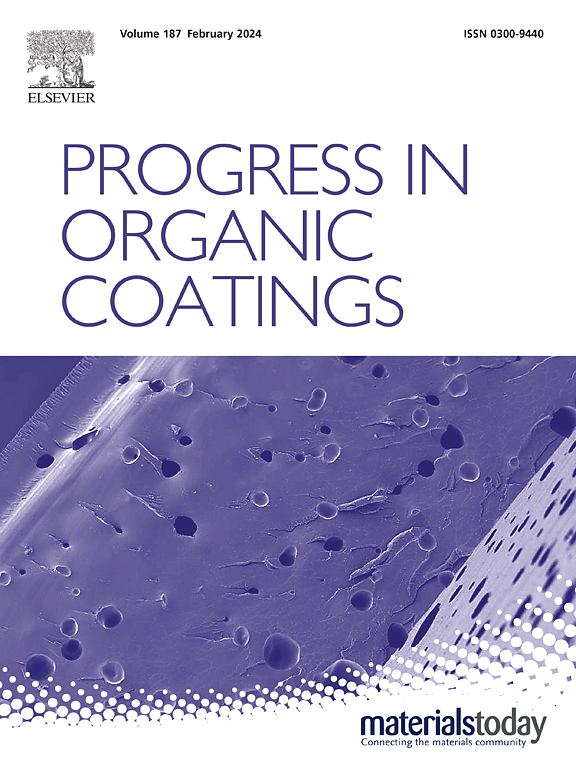Improved design, analysis, preparation and properties of photothermal phase-change polyurethane materials based on zinc ion coordination
IF 6.5
2区 材料科学
Q1 CHEMISTRY, APPLIED
引用次数: 0
Abstract
To form an intrinsic photothermal, high-strength and recyclability coating, a series of photothermal phase-change polyurethane materials which incorporates metal ions as coordination bonds was designed by polyethylene glycols of different molecular weights (6000, 8000, 10,000), diphenylmethane-4,4′-diisocyanate (MDI), zinc acetate, 1,5-naphthalenediol, p-benzoquinone dioxime, and triethanolamine (TEA). The photothermal phase-change polyurethane samples which synthesized with p-benzoquinone dioxime and 1,5-naphthalenediol as chain extenders, were named PUP-B (Li et al., 2024; Shi et al., 2021; Zhao et al., 2024 (6, 8, 10)) and PUP-N (Li et al., 2024; Shi et al., 2021; Zhao et al., 2024 (6, 8, 10)), respectively. To investigate their recyclability, these samples were dissolved and coated onto glass slides to obtain new polyurethane samples. After lighting for 420 s, the temperature of samples remained around 35–45 °C for approximately 5 min during cooling cycles, indicating excellent photothermal energy storage performance. The average maximum stress of PUP-B (10) and PUP-N (10) was 14.25 MPa and 11.96 MPa, respectively, while the average strain was 637 % and 486.44 %, demonstrating good tensile properties of the polyurethane material with PEG10K as the soft segments. The maximum water contact angle of the samples was 142.78°, indicating good hydrophobicity of the prepared samples. The recyclability, hydrophobicity, and photothermal energy storage capabilities of these materials make them suitable as green coating materials, providing new ideas for the development of aircraft anti-icing solutions.

求助全文
约1分钟内获得全文
求助全文
来源期刊

Progress in Organic Coatings
工程技术-材料科学:膜
CiteScore
11.40
自引率
15.20%
发文量
577
审稿时长
48 days
期刊介绍:
The aim of this international journal is to analyse and publicise the progress and current state of knowledge in the field of organic coatings and related materials. The Editors and the Editorial Board members will solicit both review and research papers from academic and industrial scientists who are actively engaged in research and development or, in the case of review papers, have extensive experience in the subject to be reviewed. Unsolicited manuscripts will be accepted if they meet the journal''s requirements. The journal publishes papers dealing with such subjects as:
• Chemical, physical and technological properties of organic coatings and related materials
• Problems and methods of preparation, manufacture and application of these materials
• Performance, testing and analysis.
 求助内容:
求助内容: 应助结果提醒方式:
应助结果提醒方式:


